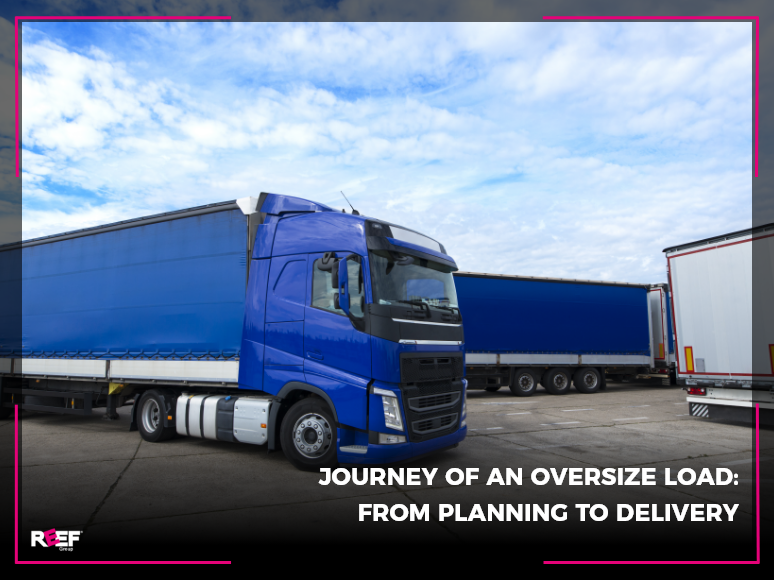Top Organising Tips for Your Storage Container

The Major Importance of the Trucking Industry
January 28, 2022
7 Cost-Saving Methods To Improve Transportation Logistics
March 1, 2022Shipping containers are ideal for storage since they can endure extreme weather and even fires, ensuring the year-round safety of your valuables or inventory. Furthermore, many businesses make the most of them by converting them into residential and office space.
If you intend to employ shipping containers, you need to be aware of the various strategies to maximise the available space. In this article, we will discuss some helpful tips for on-site storage.
Ideas for Shipping Container Storage

Strategise a feasible plan
Planning enables you to perform a task more efficiently and effectively. This process also allows a critical assessment of the goal to determine its feasibility. One approach on how you’re going to organise your shipping container is to create a list of all the items you will be dealing with. This will assist you in determining their sequence and location.
Include shelving and racks
If you plan to store anything in a shipping container, constructing shelving will come in helpful. Having adequate storage and shelving prevents objects from piling up on one’s desk or building up in the corners of the room, but also keeps them organised in a logical order. A well-designed shelf boosts the stacking capacity of the goods and maximises the use of the entire area.
Since shelving is not included in standard shipping containers, you should consider freestanding shelf systems that are fastened to the wall with tie-downs and pop-in racks. This temporary solution avoids lasting damage to the unit and leaves you with the option of reorganising as needed.
Complete your storage tools and supplies
One way to make the moving process easier is to have as many supplies as you need. This includes packing tape, bubble wraps, scissors and more.
Don’t forget to add labels
If you want to make sure you have everything accounted for, you should adequately label all boxes. By correctly labelling all compartments of your warehouse, you can ensure that your inventory remains orderly and easy to locate. You can also use the labelled boxes for more organisation to create a map of the container’s layout. This will help you know if things are lost immediately.
Be more calculated with the placement
Knowing where to place which item is key to having an efficient structure inside the storage container. It would be best if you had a reason for placing specific boxes at the far back and on the front. As with any packing and storing regulation, place heavy-lift objects towards the bottom of stacks to prevent potential accidents or injury. Overall, you should avoid piling too many items on top of one another, particularly anything heavy. Another thing to keep in mind is to prioritise commonly accessible objects. Regularly you should put accessed goods toward the front of the container or in the first row of stored objects. Likewise, it would help to place items for long-term storage or safekeeping at the furthest areas in the room.
Find ways to secure the items
Shipping Containers are constructed of industrial-strength steel to safeguard their contents from the weather. However, this does not mean that the contents are also protected from malicious individuals. For starters, you should select heavy-duty locks. Without a strong lock, there are ways for criminals to gain access to your container if it is not monitored.
You could also utilise lock boxes. These are steel containers designed to be wrapped around a padlock. They add an additional degree of security, preventing attackers from cutting your padlock and breaking into your container. A reliable alarm system is another option to secure your cargo container. An alarm system can send out an alert in the event of an intrusion, allowing you to call assistance promptly.
Evenly distribute the weight
The weight of your goods should be distributed evenly across the whole floor area of the container. A common error is to stack all of your heavy furniture in the back while the front is crammed with boxes. This is related to making a feasible floor plan. When planning, make sure to account for all heavy items first. Ascertain that they are properly spread out and not clumped into one area in the storage container.
Pack the space lightly
Packing a container firmly will assist in securing cargo in place and preventing it from moving about and becoming damaged. When loading, ensure that a continuous space exists between your items and the container’s top for optimal load balancing and shipment. Start with the heaviest objects and work your way down, leaving smaller things to fill in gaps and help disperse the load.
Do not overload boxes

While you must maximise the space in your boxes, be mindful enough not to overload them. This will help avoid a mess inside the shipping container. Speaking of boxes, you should use as many boxes of the same size as possible, as this will make stacking them much more manageable.
Finding the right container storage company
A shipping container can be the ideal solution for off-site storage for any business or individual residence. Reef Group is a container storage company in Bunbury proud to offer shipping container storage alongside container transport services, providing you with a turnkey solution for securely storing any excess items. Whatever your needs, we are prepared to supply you with safe and secure container storage in Bunbury that could very well be the answer to all of your storage problems.


